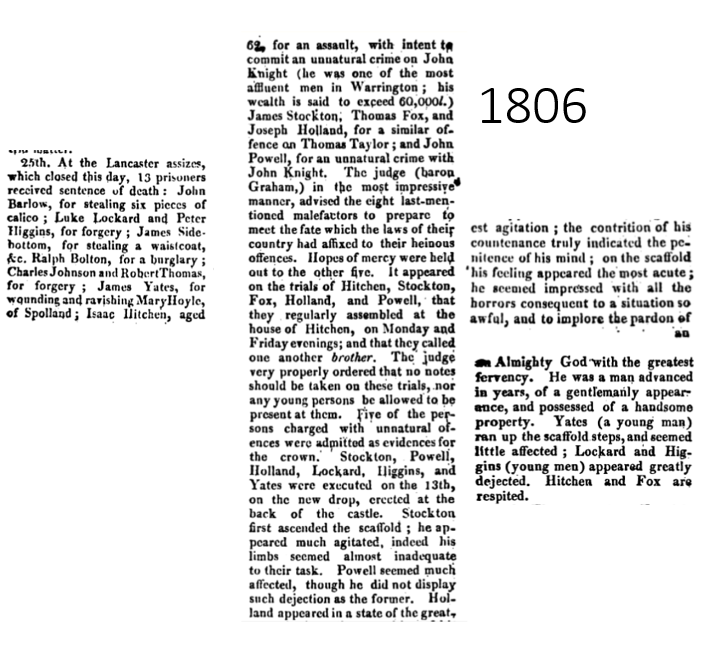alternative selves
This week's focus is on those who sought to live lives and construct selves that were seen (often by others - and sometimes by themselves) as deeply transgressive of customary norms and established morality.
In some cases this was to risk one's life. In the first thirty five years of the 19th century, 50 men were hanged for sodomy in England alone. Nearly 400 men were hanged for murder in the same period - although there was at least one year (1806) when more were executed for sodomy than for murder. 
The lecture(s) for this week look at issues concerning the language that we use to talk about identity in relation to sex, and the language used in the 18th Century, and it identifies a number of cases of individuals who lived out alternative lives in this period.
For the seminar you should prepare by identifying a case that interests you - either from those in the lecture or from some of the reading below - and try to say something quickly about whether (and in what ways) the case informs our understanding of the possibilities for (and consequences of) self-definition in the period.
Questions:
Should we understand your case as one of sex, gender or sexuality?
How reliable is the evidence we have for this case - and why is this the only evidence we have?
How far should we see the voice (in so far as is is present) as authentic or strategic?
Is there evidence that this voice is part of a set of changes in society - or a case of 'more of the same'?
Why do such voices matter in our understanding of the period?
See the following for sources and secondary material
- http://rictornorton.co.uk/ - for the full works and
- http://rictornorton.co.uk/eighteen/index.htm for the eighteenth century Both these sites have a wealth of material and commentary on them.
- It is also worth looking at how contemporaries reacted to the gender bending results of fashion and urban society - see for example Edward Ward's 'Character of a Beau' from The London Spy and his 'The Mollies Club' in his Secret History of the London Clubs, and Addison and Steele's Tatler No 107 and Spectator 275 and 281; and Mandeville's Female Tatler No's 8, 34, and 71. At the beginning of the 19th C there is also Theophile Gautier's novel Mademoiselle de Maupin (1835) (now available in Penguin).
- See also Rictor Norton’s own Mother Clap’s Molly House
- there's an interesting chapter in Oskar Jensen's Vagabonds (ch 6) pt 1Link opens in a new window pt 2Link opens in a new window
- See also Anna Clark’s works: The Struggle for the Breeches (1995), Scandal (2004) Desire: A History of European Sexuality (2008) but especially Alternative Histories of the Self (2019)
- and ed. Robert Parks McCubbin, ‘Tis Nature’s Fault: Unaurthorized sexuality in the Enlightenment (1988) (see esp Trumbach)
- G Heggarty, Men in Love: Masculinity and Sexuality in the 18th C (Columbia, 1999)
- Jen Manion, Female Husbands: a trans history (Cambridge, 2020)
Probably to be distinguished from works like:
- Catharine Arnold City of Sin (2010); Dan Cruickshank, The Secret History of Georgian London (2009); Julie Peakman, Lascivious Bodies (2004), etc., although its worth thinking about how (and how far) these are different.
- And from Faramerz Dabhoiwala, The Origins of Sex (2012) ; Thomas Laquer’s Making Sex (1990); and from Michel Fousault’s History of Sexuality – 4 vols
